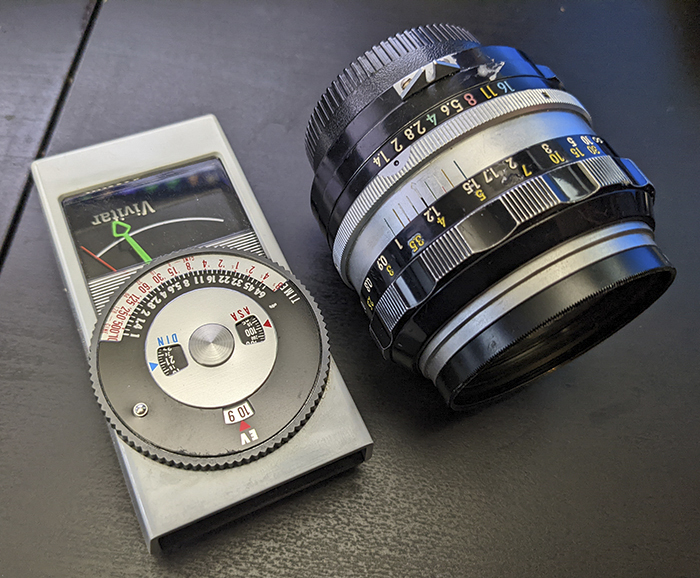Sisters Reading Act 2
Our neighbors, C (age 5) and B (age 2) are reading more than ever. This is the third reading photo (others linked below). Shot with my amazing 1960s NIKKOR F1.4 50mm lens.
Previous Reading Photos
2021
https://52frames.com/albums/2021/week-6-single-focal-point/photo/1069
https://52frames.com/albums/2021/week-12-window-light/photo/1069
2022
https://52frames.com/albums/2022/week-30-single-focal-point/photo/1069
Family Portrait 2021
https://52frames.com/albums/2021/week-19-iso-100/photo/1069

Assignment
Let's brush up on some technical fundamentals, shall we? What is a Shallow Depth Of Field. You know those "professional" photos where the subject is in sharp focus and the background is all blurred? This is a photo with a shallow depth of field - the plane of focus is very thin, and everything behind it (and in front of it) is fuzzy, or soft. This fuzziness is often referred to as "bokeh", and the type of bokeh will change with lenses, aperture settings, and a few other things. This is the fastest way to achieving more "professional" looking photos and it's as easy as setting your Aperture value in Manual mode or in Aperture Priority mode (often referred to as Av on your camera dial). When your Aperture is set to a low value (like f/1.4 or f/2.8) you will get more of this blur (shallow DoF) while high values like f/22 will keep your whole scene in focus (better for landscapes). A shallow depth of field will eliminate clutter in your frame and help to focus the viewer on your subject and your subject alone. Think of portraits, food photography, product shots, wildlife and of course macro photography. All of these genres work very nicely with this week's theme, but don't let anyone force your creative vision into a particular channel - you can even shoot landscape and nature shots with a shallow DoF. It's all about how you compose things and among other factors, your lens and aperture choice. Do keep in mind that lower aperture also lets more light in, so you may have more success with this in darker conditions.















